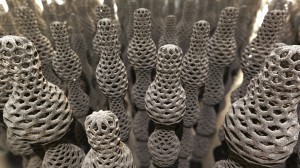I can’t believe that October 24, 2011 was the last time the Dance Your Ph.D. competition was featured here. Time flies, eh? Here’s the 2018 contest winner’s submission, Superconductivity: The Musical!, (Note: This video is over 11 mins. long),
A February 17, 2019 CBC (Canadian Broadcasting Corporation) news item introduces the video’s writer, producer,s musician, and scientist,
Swing dancing. Songwriting. And theoretical condensed matter physics.
It’s a unique person who can master all three, but a University of Alberta PhD student has done all that and taken it one step further by making a rollicking music video about his academic pursuits — and winning an international competition for his efforts.
Pramodh Senarath Yapa is the winner of the 2018 Dance Your PhD contest, which challenges scientists around the world to explain their research through a jargon-free medium: dance.
The prize is $1,000 and “immortal geek fame.”
Yapa’s video features his friends twirling, swinging and touch-stepping their way through an explanation of his graduate research, called “Non-Local Electrodynamics of Superconducting Wires: Implications for Flux Noise and Inductance.”…
Jennifer Ouelette’s February 17, 2019 posting for the ars Technica blog offers more detail (Note: A link has been removed),
Yapa’s research deals with how matter behaves when it’s cooled to very low temperatures, when quantum effects kick in—such as certain metals becoming superconductive, or capable of conducting electricity with zero resistance. That’s useful for any number of practical applications. D-Wave Systems [a company located in metro Vancouver {Canada}], for example, is building quantum computers using loops of superconducting wire. For his thesis, “I had to use the theory of superconductivity to figure out how to build a better quantum computer,” said Yapa.
Condensed matter theory (the precise description of Yapa’s field of research) is a notoriously tricky subfield to make palatable for a non-expert audience. “There isn’t one unifying theory or a single tool that we use,” he said. “Condensed matter theorists study a million different things using a million different techniques.”
His conceptual breakthrough came about when he realized electrons were a bit like “unsociable people” who find joy when they pair up with other electrons. “You can imagine electrons as a free gas, which means they don’t interact with each other,” he said. “The theory of superconductivity says they actually form pairs when cooled below a certain temperature. That was the ‘Eureka!’ moment, when I realized I could totally use swing dancing.”
John Bohannon’s Feb. 15, 2019 article for Science (magazine) offers an update on Yapa’s research interests (it seems that Yapa was dancing his Masters degree) and more information about the contest itself ,
..
“I remember hearing about Dance Your Ph.D. many years ago and being amazed at all the entries,” Yapa says. “This is definitely a longtime dream come true.” His research, meanwhile, has evolved from superconductivity—which he pursued at the University of Victoria in Canada, where he completed a master’s degree—to the physics of superfluids, the focus of his Ph.D. research at the University of Alberta.
This is the 11th year of Dance Your Ph.D. hosted by Science and AAAS. The contest challenges scientists around the world to explain their research through the most jargon-free medium available: interpretive dance.
“Most people would not normally think of interpretive dance as a tool for scientific communication,” says artist Alexa Meade, one of the judges of the contest. “However, the body can express conceptual thoughts through movement in ways that words and data tables cannot. The results are both artfully poetic and scientifically profound.”
…
Getting back to the February 17, 2019 CBC news item,
…
Yapa describes his video, filmed in Victoria where he earned his master’s degree, as a “three act, mini-musical.”
“I envisioned it as talking about the social lives of electrons,” he said. “The electrons starts out in a normal metal, at normal temperatures….We say these electrons are non-interacting. They don’t talk to each other. Electrons ignore each other and are very unsociable.”
The electrons — represented by dancers wearing saddle oxfords, poodle skirts, vests and suspenders — shuffle up the dance floor by themselves.
In the second act, the metal is cooled.
“The electrons become very unhappy about being alone. They want to find a partner, some companionship for the cold times,” he said
That’s when the electrons join up into something called Cooper pairs.
The dancers join together, moving to lyrics like, “If we peek/the Coopers are cheek-to-cheek.
In the final act, Yapa gets his dancers to demonstrate what happens when the Cooper pairs meet the impurities of the materials they’re moving in. All of a sudden, a group of black-leather-clad thugs move onto the dance floor.
“The Cooper pairs come dancing near these impurities and they’re like these crotchety old people yelling and shaking their fists at these young dancers,” Yapa explained.
Yapa’s entry to the annual contest swept past 49 other contestants to earn him the win. The competition is sponsored by Science magazine and the American Association for the Advancement of Science.…
Congratulations to Pramodh Senarath Yapa.
